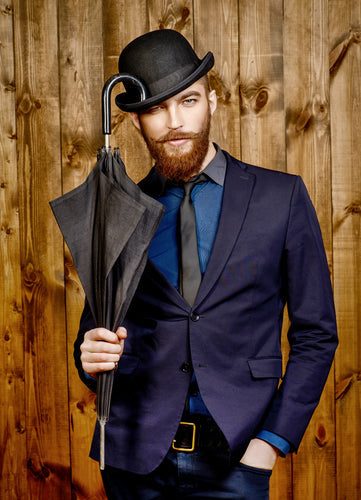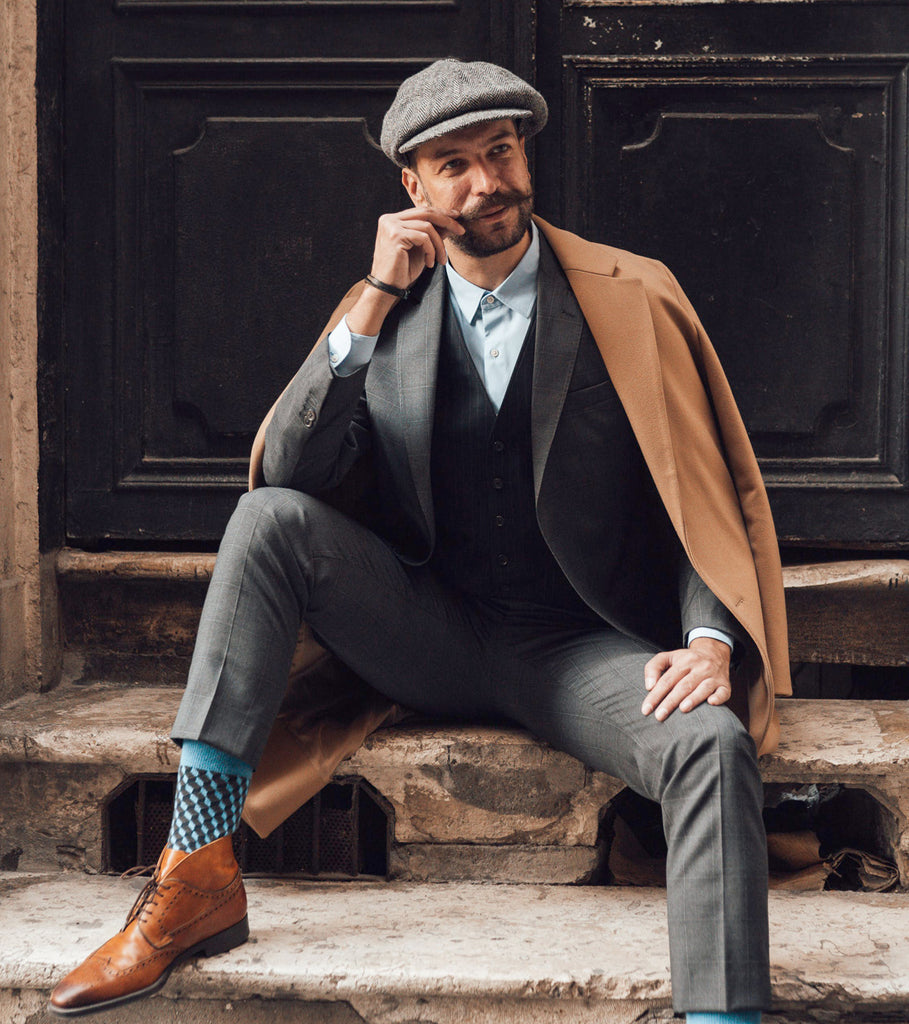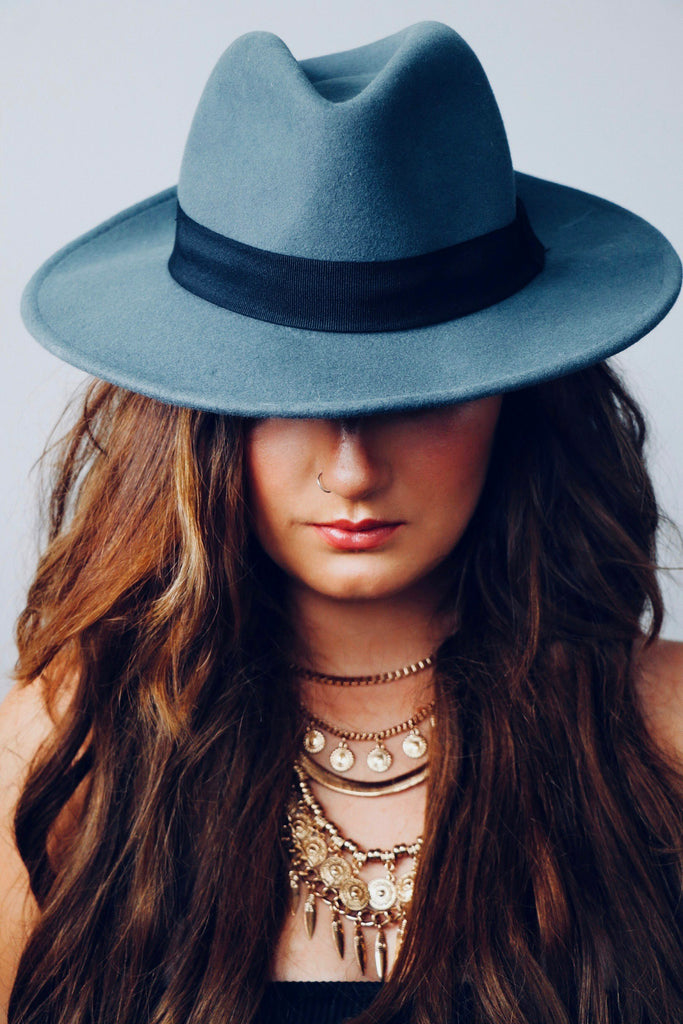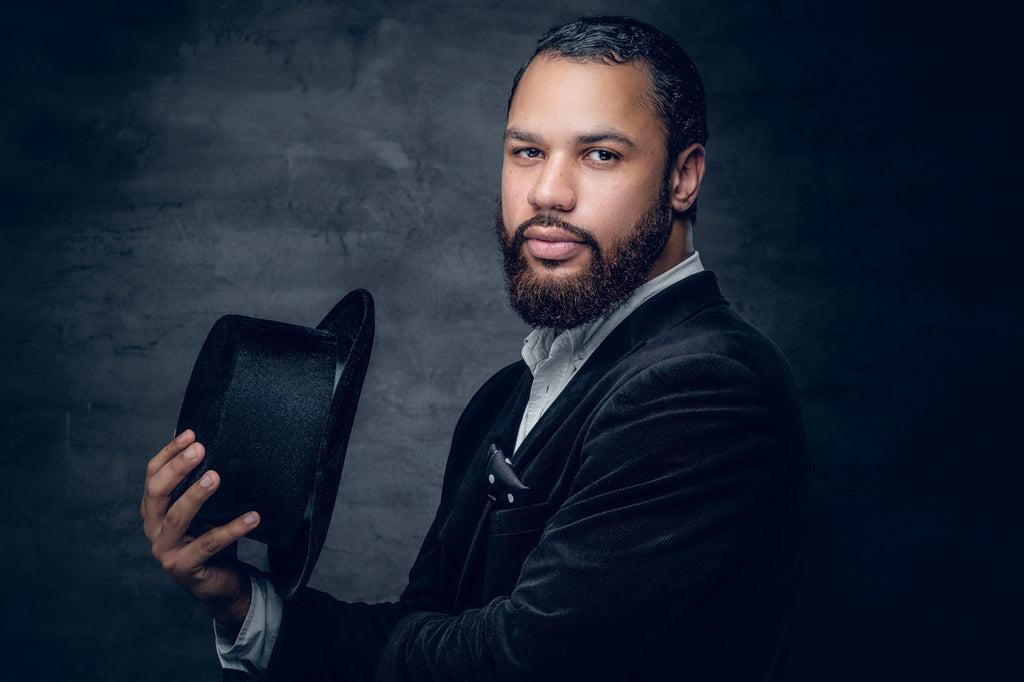Hats Off: How to Avoid a Style Faux Pas with Modern Hat Etiquette

While hats are no longer the daily norm for most gentlemen, many enjoy accessorizing with a hat often. Others have a collection reserved for special occasions. And so, what of modern hat etiquette? Do the hat rules we see practiced in old movies and period pieces apply today?
Let's look at hat history, when to wear a hat (and when not to wear one), address how to dress for specific hats, and answer your pertinent questions about the various places it's best to keep your hat off.
A Brief History of Hats
We can assume humans have essentially always worn hats. Originally, hats were worn for warmth and protection. Later, they would have been worn as a form of identification and allegiance, such as in sports and the military.
The hats we think of in the context of the modern gentleman include the flat cap, panama, top hat, and fedora. Of course, there are many more that were once at the height of fashion, like the bowler (known in the US as the derby) and the boater, but here we’ll cover just those we still reach for today.
The Flat Cap
In the 1500s, boys over the age of six were required by the British Parliament to cover their heads with a wool flat cap on holy days.
Since then, some version of the flat cap has been a staple in men’s fashion. The cap's simple yet versatile design - featuring a flat, rounded crown and a small stiff brim - has long made it a practical choice for men of all social standing who value heritage, functionality, and style.

What to Wear with a Flat Cap
Between the flat cap and all of its handsome cousins – including the newsboy, ivy, scally, gatsby, golf, driver, and higdon caps – there might be a hat of this general shape that suits everyone!
A flat cap is charming with a variety of ensembles, from casual looks to something more stylized, like a sweater vest or with tweed.
The Panama Hat
The straw panama hat, despite its name, originates from Ecuador. Its history dates back to the 17th century, but only gained international recognition in the 19th century when they became popular among workers on the Panama Canal, hence acquiring their moniker. In time, the panama became associated with sophistication and leisure.

What to Wear with a Panama Hat
Lightweight and breathable, panama hats have long been an essential hot weather accessory and pair well with such fabrics as seersucker, linen, and madras. They are perfect for a summer wedding, outdoor events, and casual vacation looks.
The Top Hat
The top hat, an iconic symbol of formal attire and refined elegance, originated in England in the 18th century.
The top hat's tall, cylindrical shape and stiff construction distinguished it from other headwear of the time, making it a symbol of status prized by the aristocracy and upper classes. It was standard 19th century formal wear for day and evening occasions but, as fashion evolved, it fell away from everyday use.

What to Wear with a Top Hat
The top hat today is reserved for special events that call for a white tie dress code, such as weddings, horse races, and ceremonies. White tie looks should be further accessorized with other white accessories, such as a white bow tie, white pocket square, and even white gloves.
The Fedora
The fedora was first worn by women, having been made popular by the lead actress in the play "Fédora" by Victorien Sardou. The hat then rose to prominence in the 1920s and 1930s, favored primarily by male Hollywood stars, politicians, and gangsters.
Its wide brim and creased crown offered both practicality and flair, providing protection from the elements while adding a distinctive silhouette.

What to Wear with a Fedora
The more fitting question may be what can’t you wear with a fedora?
The fedora and hats with a similar profile, like the trilby, homburg, borsalino, pork pie, and havana, are popular choices with both men and women. These hats invite individual style and flair, can be dressed up or dressed down, and are acceptable in any color.
The Rules of When to Wear or Not Wear a Hat
Modern hat etiquette is far more relaxed than it was in years gone by, but rules persist nonetheless. These days, hat wearers are expected to respect social norms, expressing their personal style sensibly and considerately in various contexts. Let’s look at the broadly-accepted dos and don’ts and then answer some frequently asked etiquette questions.
Hat Wearing Dos:
Consider occasion and location when deciding on the appropriateness of a hat. If in doubt, contact the event host or venue to ask if hats are appropriate. Generally, a gentleman should feel comfortable leaving his hat on:
- Outdoors
- At sporting events
- Indoor public spaces, e.g. post office, airport, building lobby, elevator, corridors
- On public transportation
- If the host shows it appropriate by leaving their own hat on
Hat Wearing Don’ts:
There are many more scenarios when a gentleman should take his hat off, some of which feel outdated. People who wear hats often tend to have their own set of protocols – typically a blend of societal expectations and their father’s!
- When entering an intimate indoor space, e.g. home, restaurant, school, church
- During meals
- During the National Anthem and the pledge of allegiance
- When the American Flag passes by, e.g. during a parade
- During a personal introduction
- During an indoor performance

Top 10 Questions About Hat Etiquette
-
Why is it disrespectful to wear hats indoors?
It’s said that the answer to this question harkens back to medieval times when knights removed their helmets in order to identify themselves as friend rather than foe. If such a show of kinship and respect has remained intact this long, chances are favorable that it will continue into the next generation!
Additionally, removing one's hat indoors allows for clear and unobstructed communication, demonstrating attentiveness and courtesy. In some cases, hats worn outdoors can accumulate dirt, sweat, or other contaminants. Removing them indoors helps maintain cleanliness and hygiene.
-
Can ladies wear hats indoors?
Yes! In fact, hat etiquette for ladies is quite different. Many of the don’ts listed above are not applicable to women – unless their hat is obstructing the view of others.
-
Can you wear a hat in court?
You are expected to remove your hat in court as a sign of respect to the higher authorities in the room, most specifically the judge. Not removing your hat when asked to do so can be considered contempt of court. (Can you wear a hat to jury duty? Definitely not.)
As an aside – you may not be held accountable if you wear a hat in a government building, but convention says you should remove it on entry.
-
Can you wear a hat in church?
Men are expected to remove their hats on entering a house of worship, and especially during prayer. Women are exempt from this rule.
-
Can you wear a hat to a wedding?
It’s common for men to sport hats to spring and summer weddings, and to wear a top hat for white tie events. At those most formal events, the gentleman must remove his hat. At a less formal wedding – especially an outdoor affair – it may be acceptable to wear the hat throughout the program.
-
Can you wear a hat to a funeral?
A dark colored hat is appropriate for a funeral - even fitting. The same general indoor rule applies, particularly while in a house of worship, for the wake or other funeral ceremonies.
-
Can you wear a hat on a plane?
Yes, wearing a hat on public transportation is fine. In fact, many people choose to wear their hat rather than take a gamble on stowing it overhead or in a bag and risk damage.
-
Can you wear a hat for business casual?
Hats are not generally worn in a place of business – but if you are one to accessorize with a bow tie, a bold sock, or a pair of statement cufflinks, go for it! As long as you’re not breaking the office dress code, express yourself!
-
Is it rude to wear a hat in a restaurant?
No surprise here: it is considered rude for a gentleman to wear a hat in a restaurant. If you’re seated outside (and it's sunny or hot) or the establishment is informal and hat wearing indoors is the norm, there’s no need to remove it.
-
Do men still tip their hats?
Not anymore. Years ago, men tipped their hats to show respect, communicate a salutation like “Hello!”, “Goodbye!”, and “How do you do?”, and extend a courtesy such as “Thank you!” and “Excuse me!”. If the man took his hat off completely, he intended to stop and talk to the man or woman he encountered.

This symbolism is behind the “hats off” meaning too. If someone says, “Hats off to you!” they are sharing praise or admiration. (There are numerous other idioms that involve hats, but that’s a whole ’nother article!)
Do you have a favorite hat or handsome outfit featuring a great hat? Show us! We’re on Instagram and Facebook – tag us with #RHanauer!

